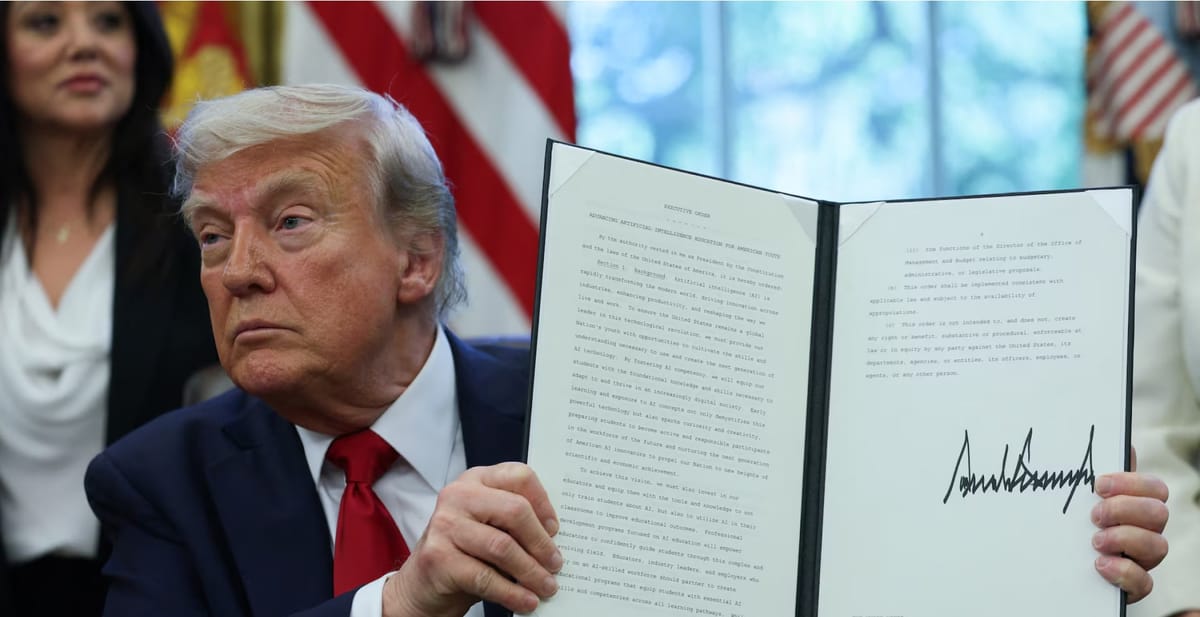
President Trump signed an executive order Wednesday that places artificial intelligence education at the center of America's educational future. The directive, Advancing Artificial Intelligence Education for American Youth, outlines a comprehensive strategy to integrate AI knowledge into K-12 classrooms and create what the administration hopes will be an AI-ready generation.
Key Points
- The executive order mandates AI literacy training for students and comprehensive AI education programs for teachers.
- A White House Task Force on Artificial Intelligence Education will coordinate efforts across federal agencies and the private sector.
- Federal grants and apprenticeship programs will prioritize AI skill development to future-proof the American workforce.
"AI is where it seems to be at," Trump remarked during the signing ceremony, in a characteristic understatement of what has become a major administration priority.
The order creates a White House Task Force on Artificial Intelligence Education, led by the Office of Science and Technology Policy, and tasks multiple agencies—including the Departments of Education, Labor, and Agriculture—with coordinating a national strategy. “We must properly train the workforce of the future,” said White House staff secretary Will Scharf, adding that the goal is to make young Americans “competitive in the economy years from now into the future.”
Among its directives, the order instructs Education Secretary Linda McMahon to prioritize federal funding toward AI-related training for teachers and administrators. Professional development will focus not only on integrating AI into specific classes like computer science but weaving AI fundamentals across all subject areas. An annual Presidential Artificial Intelligence Challenge will also be launched to reward student and educator achievements and foster broader AI literacy nationwide.
In parallel, the Labor Department will push for expanded AI-related apprenticeships and certifications. “Artificial intelligence is reshaping the job market, and it’s critical we equip our workers with the skills they need to lead in this new era,” Deputy Secretary of Labor Keith Sonderling said, applauding the order’s workforce development focus. Apprenticeship funding, workforce grants, and industry partnerships will all be directed to grow AI capabilities among young workers.
A notable feature of the order is its heavy emphasis on public-private collaboration. The administration wants schools to partner with tech companies and nonprofits to design resources and learning platforms for K-12 students. Federal agencies have been tasked with announcing these partnerships on a rolling basis, aiming to have AI instructional resources ready for classrooms within 180 days.
Over the last two years, AI's presence in education has exploded—delivering new tools for personalized learning while raising serious debates about bias, privacy, and academic integrity. By setting a clear national agenda, the Trump administration is betting that early exposure to AI will create a new generation of innovators while safeguarding the American workforce’s place in a fast-changing digital economy.
One area to watch will be how states and local school districts, which maintain broad control over curriculum, react to this federal push. While the order provides incentives and resources, its success may depend heavily on voluntary adoption, particularly in regions skeptical of federal mandates or wary of rapid technological change in classrooms.
For now, the message from the White House is clear: AI education isn’t optional. It’s now federal policy.

